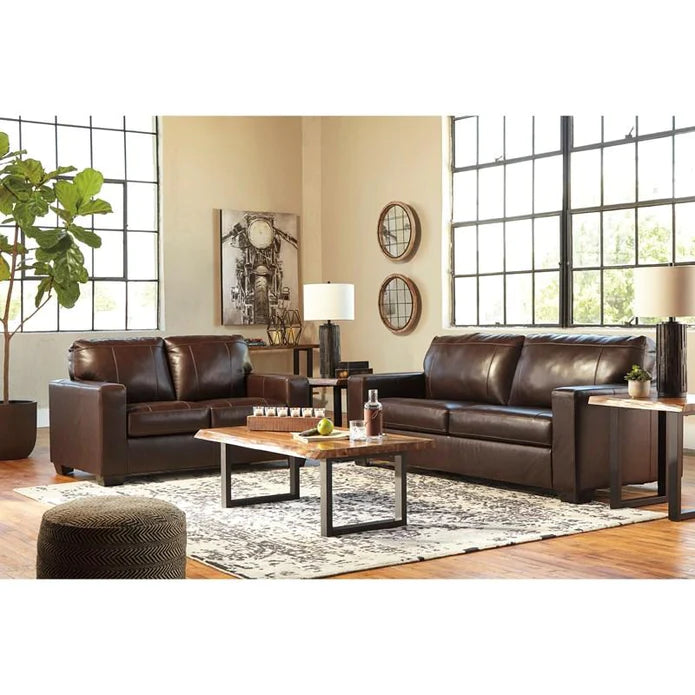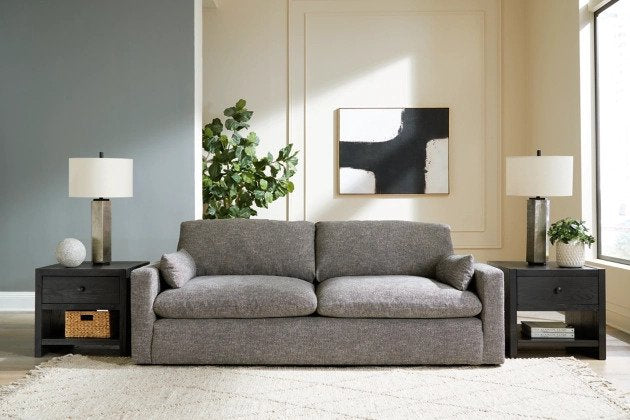
The Do’s & Don’ts Of Sofa Cleaning
Sofas - most people will own them, but not everyone will know how to clean them correctly. It’s inevitable, over time, a sofa will get dirty, whether from everyday use or from little ones with sticky fingers. Regardless of how they became dirty, the outcome remains the same, your sofa will need regular cleaning and perhaps even an occasional treatment. In this blog, we will help you to understand exactly what cleaning products should be used to effectively clean your couch. Still, this isn’t a one-size-fits-all guide, sofas are available in a multitude of colors and materials now which affects how they can be cleaned. So, to make this easier, we have included cleaning tips below for the most common sofa material types.
- Leather Cleaning
- Velvet Cleaning
- Faux Suede Cleaning
- Polyester Cleaning
Leather Sofas
Genuine leather sofas are a popular choice for many, especially families. A leather sofa can be easily wiped clean from any spillages and will last years if properly maintained. Leather’s durability easily outweighs other materials which is why it tends to be a person’s first choice for sofa materials. Follow the do’s and don’ts below when cleaning your genuine leather sofa:
Leather Do’s
Leather cleaning wipes are relatively inexpensive and are hugely beneficial for leather sofas. Use these 3-4 times a year on the entire leather sofa including the back, arms, seats etc. These wipes will clean and add moisture to your leather. Not only this but these wipes will also add a protective barrier to your leather’s surface, meaning it’s less susceptible to damage such as scratches.
Use a lightly dampened cloth to wipe down your leather sofa from time to time. Over time, leather can acquire a build-up of dust, if not removed it can become abrasive and wear the leather.
Removing stains from leather is easy if you act quickly. For spillages that have just occurred like wine, greasy foods etc, use a lightly dampened cloth and gently rub across them until they disappear.
Use a leather-specific cleaning kit for those tougher marks such as ink. As part of most leather cleaning kits, you will find an ink removal wipe. Use this wipe to gently dab at the ink stain while being careful not to touch any material that is not stained by the ink.
Use a leather moisturizer regularly to add a protective barrier to your leather sofa. This can be found in most leather cleaning kits and can keep leather clean, soft, supple and less susceptible to scratches.
Leather Don’ts
Do not use baby wipes as an alternative to leather wipes. The chemicals used in baby wipes are not suitable for leather and will cause damage to your leather sofa.
Do not use a heavily soaked cloth. The chemicals in tap water can cause dryness and spot marks on the leather. Using a slightly damp cloth will not affect your leather.
Don’t keep your leather sofa near a heat source such as a radiator. This will dry out the leather and make it more susceptible to damage.
Velvet Sofas
Velvet sofas are a personal favorite of ours, not only do they look beautiful, but they feel amazing too. Still, they’re not as wipeable as leather which makes a lot of people think they are difficult to clean. In reality, they couldn’t be further from the truth. Follow the simple steps below to clean your velvet sofa effectively:
Velvet Do’s
To remove a build-up of dust, debris, and fluff from a velvet sofa, simply use a lint roller. Velvet does tend to gather dust quicker than other fabrics, so you should expect to do this regularly.
You don’t need any special cleaning products to clean a velvet sofa. For spills such as tea, milk, and coffee, allow them to dry into the mini fibers first before attempting to clean them. We know, this might sound silly, but trust us. Then use a damp cloth and warm soapy water, a baby wipe, or even an upholstery wipe if you have one to rub at the stain.
Like any fabric sofa, removing body or pet odors from a velvet sofa does require the help of a professional. Enlist a specialist to steam clean/shampoo your upholstery every 12-18 months. This will keep your sofa smelling fresh. Don’t forget to have all matching pieces cleaned at the same time as your velvet sofa as this will ensure an even fade amongst all of your matching velvet furniture.
Velvet Don’ts
Avoid using chemical cleaners on all sofa fabrics including velvet. The chemicals can cause colors to fade and degrade the fibers in your upholstery.
If possible, try to position your velvet sofa away from direct sunlight. The chemical components that give velvet its color can be destroyed by UV radiation, which can make it appear dull over time. Alternatively, you could use a decorative throw or blanket to cover your velvet sofa when not in use.

Faux Suede Sofas
This is another favorite material of ours. Faux suede, like velvet, gives off a beautiful appearance. Just look at the sofa below! This requires less maintenance than velvet which is why it is a popular choice for young families.
Faux Suede Do’s
You’ll be delighted to know that there is no regular cleaning with a faux suede sofa. It won’t accumulate as much dust as a velvet sofa does because of its microfibres, but if dust does end up settling on it, all you need to do is use the brush attachment on your vacuum cleaner with the lowest suction option to remove it.

Microfibre is liquid repellent, so spills aren’t a huge problem for a faux suede sofa. If you do start to notice stains or dirty spots, you can use a paper towel to soak up excess moisture and a clean, damp cloth to address the issue.
Enlist the help of a professional to remove body/pet odors from your faux suede sofas. Every 12-18 months should suffice. The specialist will steam-clean your fabric and make it smell fresh again. Don’t forget to get all matching pieces of furniture steam cleaned at the same time to allow for an even fade. After steam cleaning, it is advisable to brush the surface of faux suede to restore the raised look or nap of the surface.
Faux Suede Don'ts
Again, it is not recommended to use any chemical cleaners on faux suede. Always refer to the manufacturer's instructions before using anything non-standard on your faux suede.
Polyester Sofas
Fabric sofas are made using a variety of upholstered materials, the most common though is polyester. Polyester is resistant to fading, wrinkling and snags. It is strong, stretchy and easy to clean.
Polyester Do’s
Similar to faux suede, there is no regular cleaning with a polyester sofa. If dust does settle on polyester it can be easily removed using the brush attachment on a vacuum cleaner using the lowest suction.
Lighter-coloured polyester fabrics, like all lighter-coloured materials, will show dirt easier. For this, you can use an upholstery wipe to remove this. These wipes can be found in most sofa cleaning kits.
A sofa cleaning kit will usually include a stain remover. Use this to remove stubborn stains. Dab lightly at the stain, gently wipe with a damp cloth, and then let it dry naturally. *Always test a stain remover on a concealed area of the fabric first*.
Enlist the help of a professional to remove body/pet odors from your polyester sofa every 12-18 months. The professional will steam-clean your fabric and make it smell fresh again. Don’t forget to get all matching pieces of furniture steam cleaned at the same time to allow for an even fade.
Pilling is common with polyester sofas because it is a tightly woven material. Pilling is similar to the fuzzing you might experience with a woolen jumper. To remove these little balls of material, use a battery-operated clothing shaver. Be careful when using this shaver so as not to tear a hole into the polyester. Always test this on an inconspicuous area first and remember to hold it lightly against the polyester.

Polyester Don’ts
Don’t keep your polyester sofas near heat sources such as radiators. Since the synthetic fibers of polyester don’t have the same heat tolerance as natural ones, it could singe and burn and then melt the material.
Luckily, there isn’t a lot of upkeep with most sofa materials. Stick to darker-coloured fabrics if you want to avoid cleaning your sofa more regularly. Light-coloured fabrics, although beautiful, tend to show dirt easier




